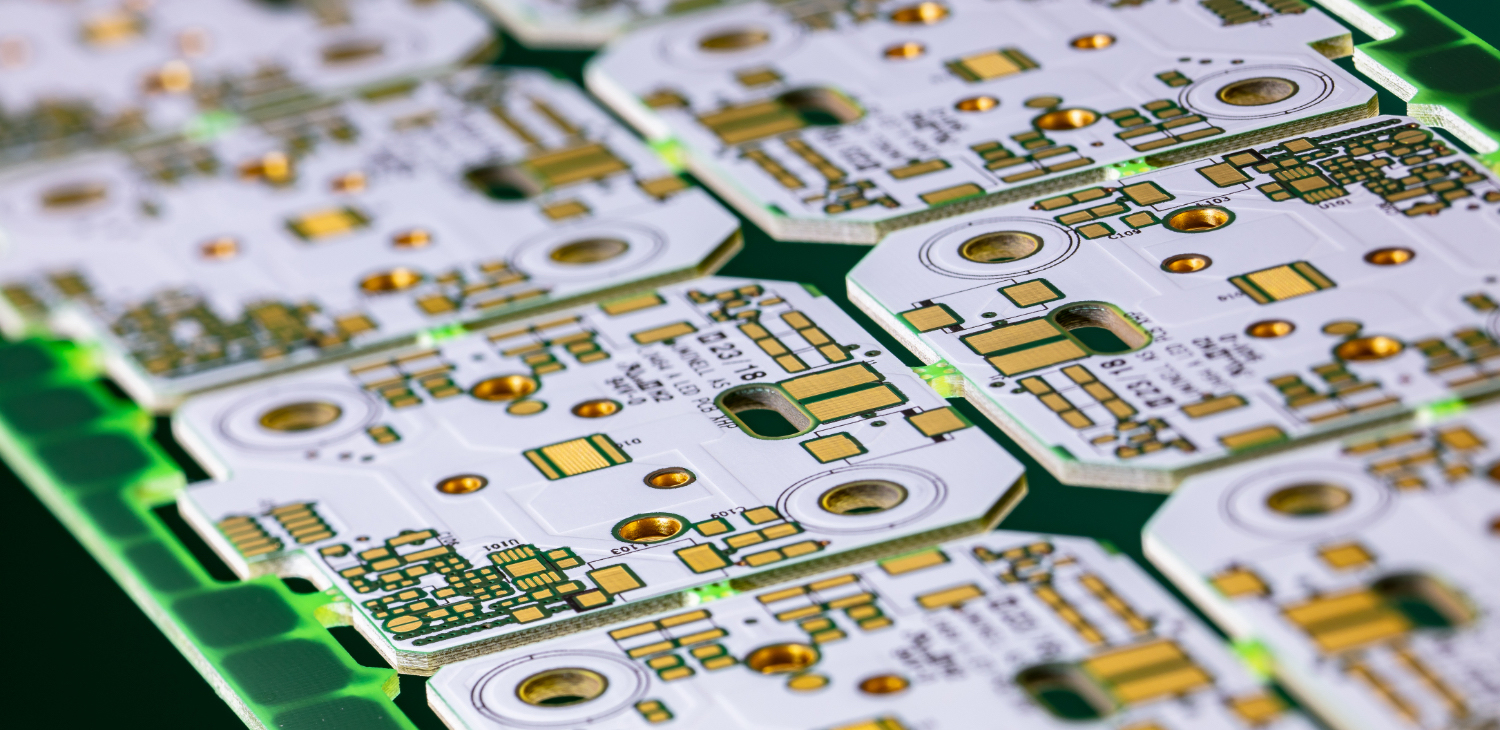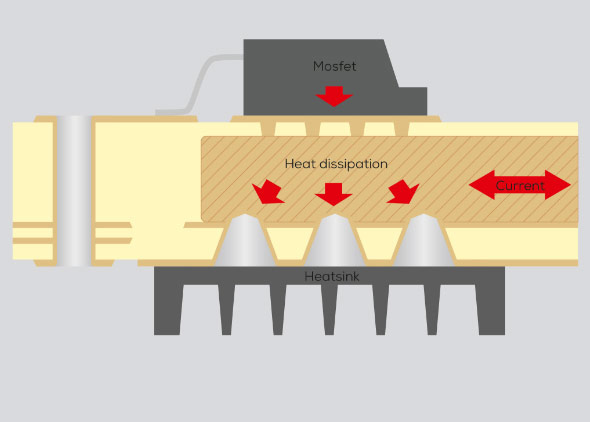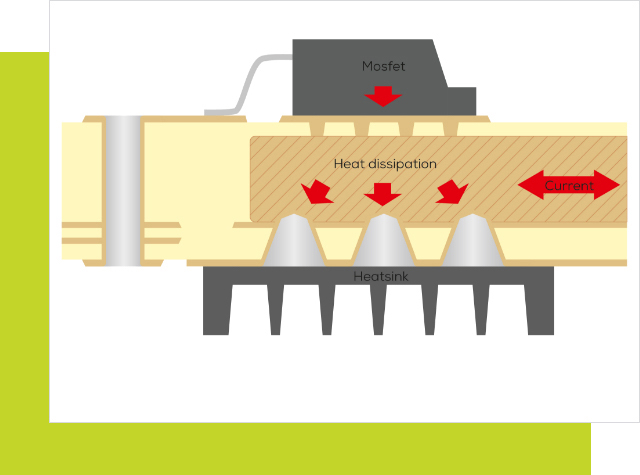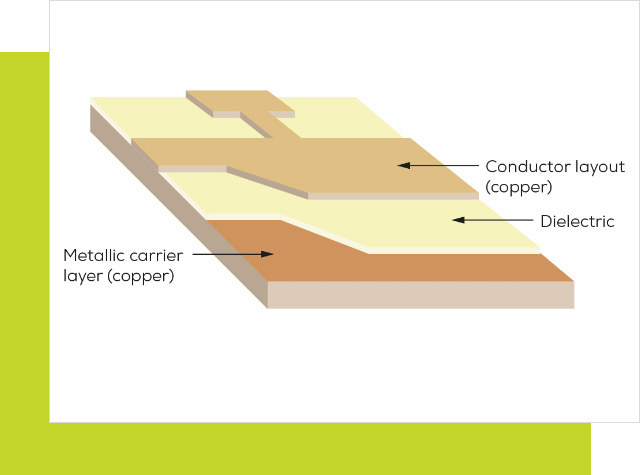Thermal management
Our technologies for optimum heat management easily handle high currents, ensure effective heat dissipation from high-clock-speed, heat-producing processors and power components and also carry the control electronics on the same board.
Your benefits
- Precisely targeted thermal conduction of heat loss from power components
- Creation of an individual concept based on your requirements
- Support with the design, dimensioning and choice of concept for your PCB
- Thermal simulations, measurements and analyses
- Implementation of the layout in the standard process
Design examples for TO263 casing Copper profile + microvias/thermovias/blind vias:
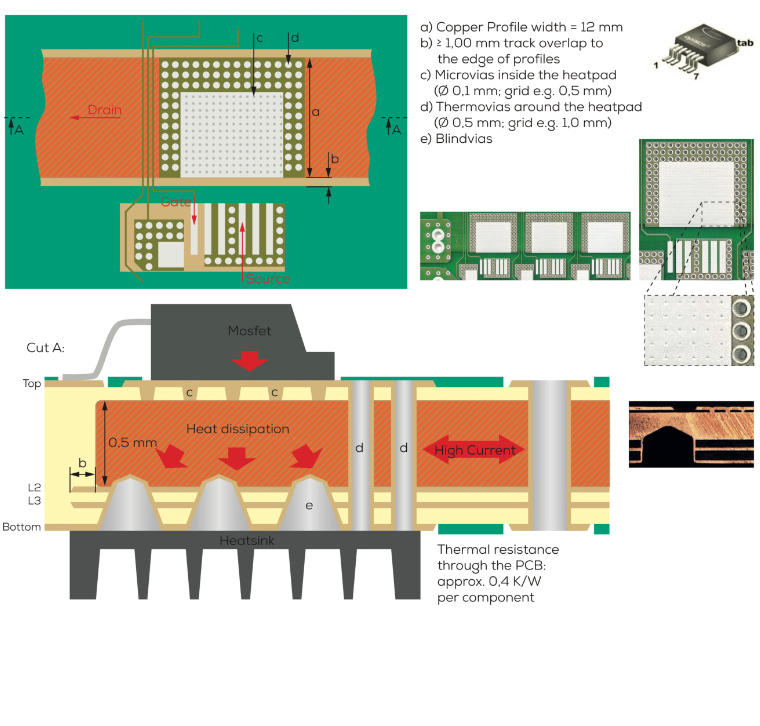
Bent copper profile + micro vias / thermovias:
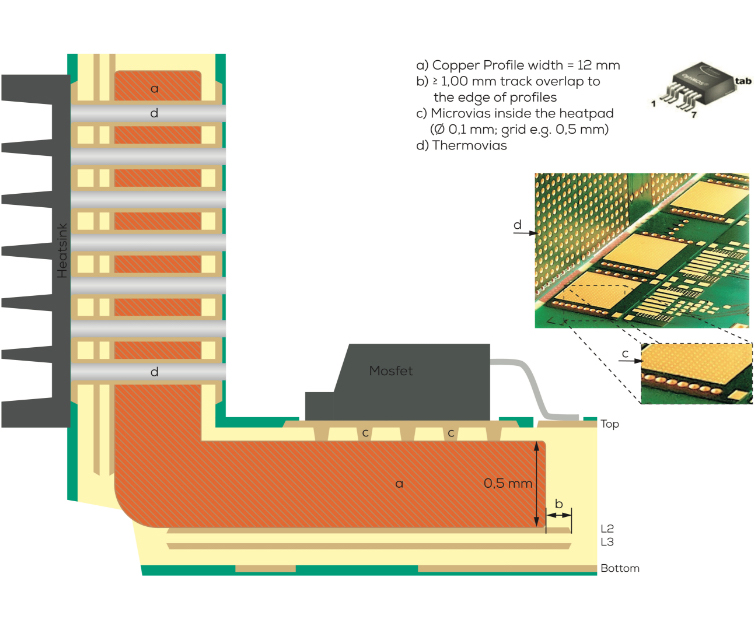
Copper profile + microvias/thermovias
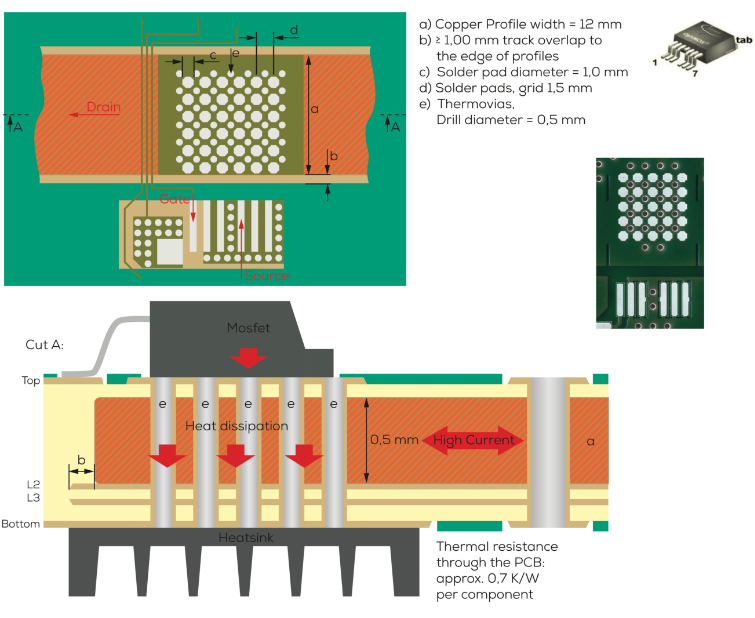
Single-layer copper IMS:
Example: Thermal Clad HT-04503 material from Henkel/Bergquist
Thermal conductivity of 2.2 applies only to the insulation material (bright yellow)
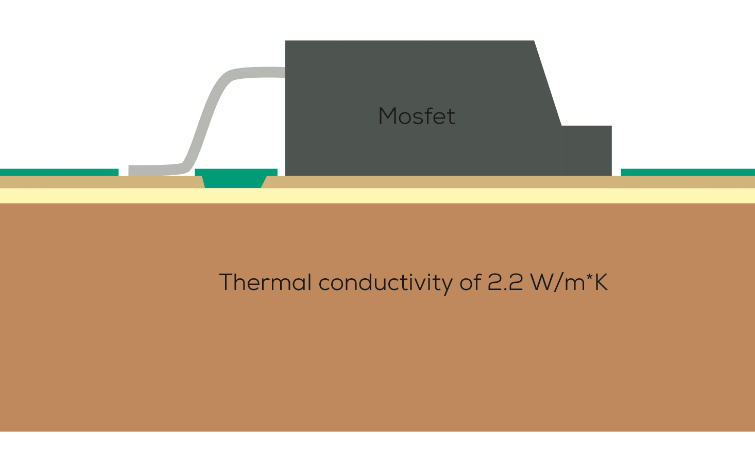
- Thick Cu film top: 70 µm
- Thickness of dielectric: 76 µm
- Dielectric thermal conductivity: 2.2W/m*K
- Copper substrate thickness: 1.0 mm
Application: Marine and boat lighting
| Structure | 4-layer multilayer, 35µm copper |
| Material | FR4 TG130°C |
| PCB thickness | 1.6 mm |
| Circuit board technology | 1.3mm thick copper profile for heat dissipation |
| Special features | Partial heat dissipation in the area of the LEDs combined with control electronics on the board |
| Project | luminell.com |
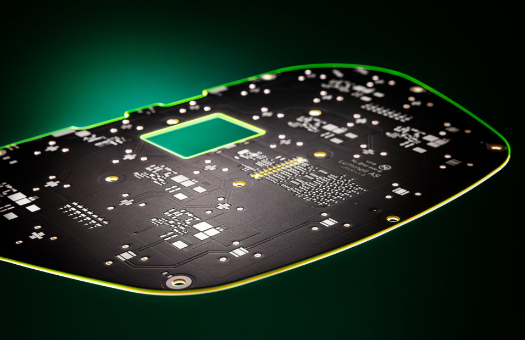
Application: automotive EMC and electrical system testing
| Structure | 4-layer multilayer, 70µm copper |
| Material | FR4 TG130°C |
| PCB thickness | 1.6 mm |
| Circuit board technology | 12mm wide copper profiles on the inside |
| Special features | Copper profiles for 100A current flow and for heat dissipation to heat sink on back of board |
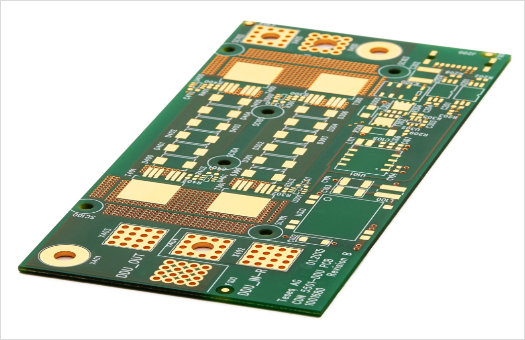
Motor controller for fan cooling
| Structure | 4-layer multilayer, 70µm copper |
| Material | FR4 TG150°C Panasonic R1566W |
| PCB thickness | 1.7 mm |
| Circuit board technology | 12mm, 8mm and 2mm wide copper profiles on an inner layer and an outer layer for 60 and 15 amperes |
| Special features | Eight half-bridges have to be connected to the connectors by 3x15A conductors. Heat dissipation from the half-bridges has to be carried via a bending edge to a PCB tab that is glued to an aluminium heat sink in the casing. |
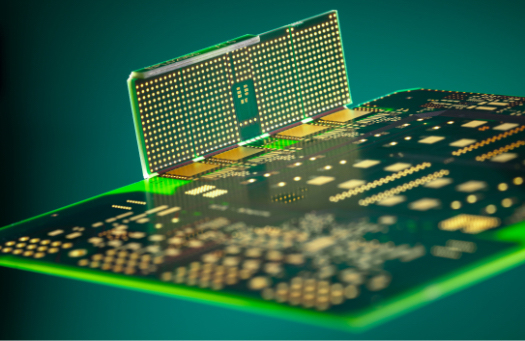
Application: Electric vehicles
| Structure | 4-layer multilayer, 70µm copper |
| Material | FR4 TG150°C Panasonic R-1566W |
| PCB thickness | 1.6 mm |
| Circuit board technology | HSMtec, 8 and 12mm wide copper profiles on the inside |
| Special features | Copper profiles for 220A current flow and for heat dissipation to heat sink on back of board |
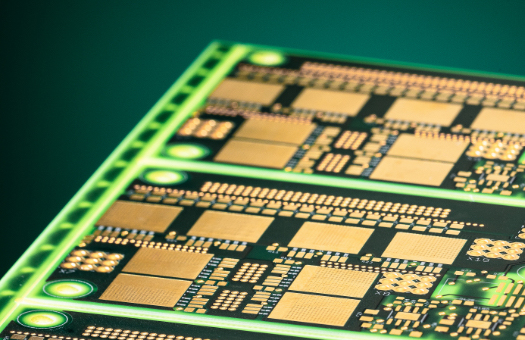
Optimising high-current circuit boards for motor controllers: Technical article from Elektronik Praxis
Description: Three PCB technologies for high-current PCBs are compared in this article: thick-film, Iceberg and HSMtec. PCB topology and design have an effect on the current-carrying capacity and heat dissipation of the power semiconductors
The technical parameters for implementing a PCB with effective heat dissipation are numerous. That is why we advise you to talk to us at a very early stage of development. Through an on-site or online consultation or an in-house workshop, we can discuss the technical aspects and special considerations that such PCB types involve right from the start. We are also happy to help you with technical optimisation features or cost reduction measures.
Simply make an appointment by e-mail right now: power@ksg-pcb.com
We are happy to support your thermal management project at every step along the way.
Contact our expert team here.
PCB technologies for heat management
KSG offers you two technology variants for optimum heat management:
A safe track to be smarter together
Take advantage of the direct line to the experienced PCB experts in our Technical Support. We are happy to support you in every phase of your project.
Thermal management for power components
Power and control electronics on a single PCB
Extended service life and reduced system costs
